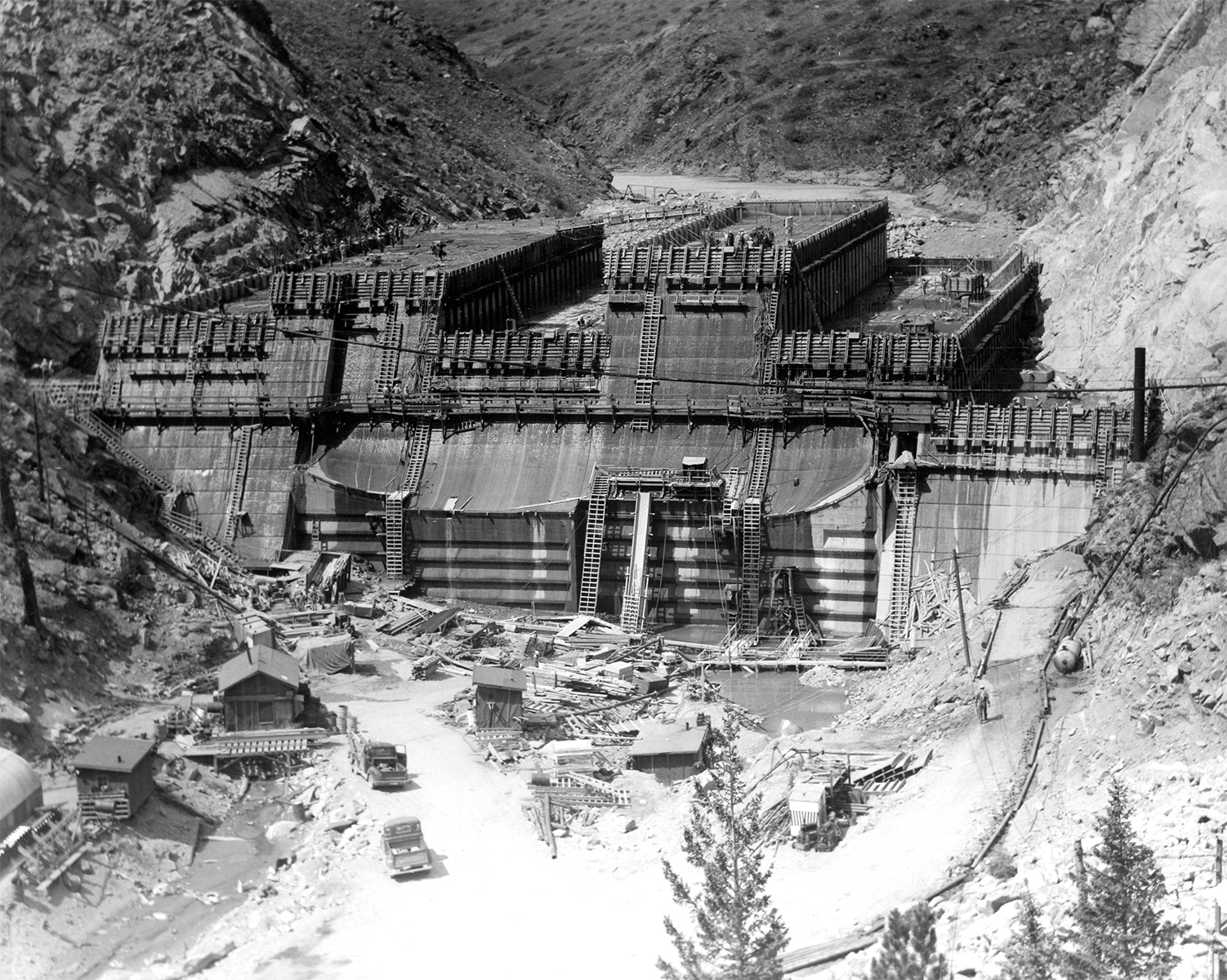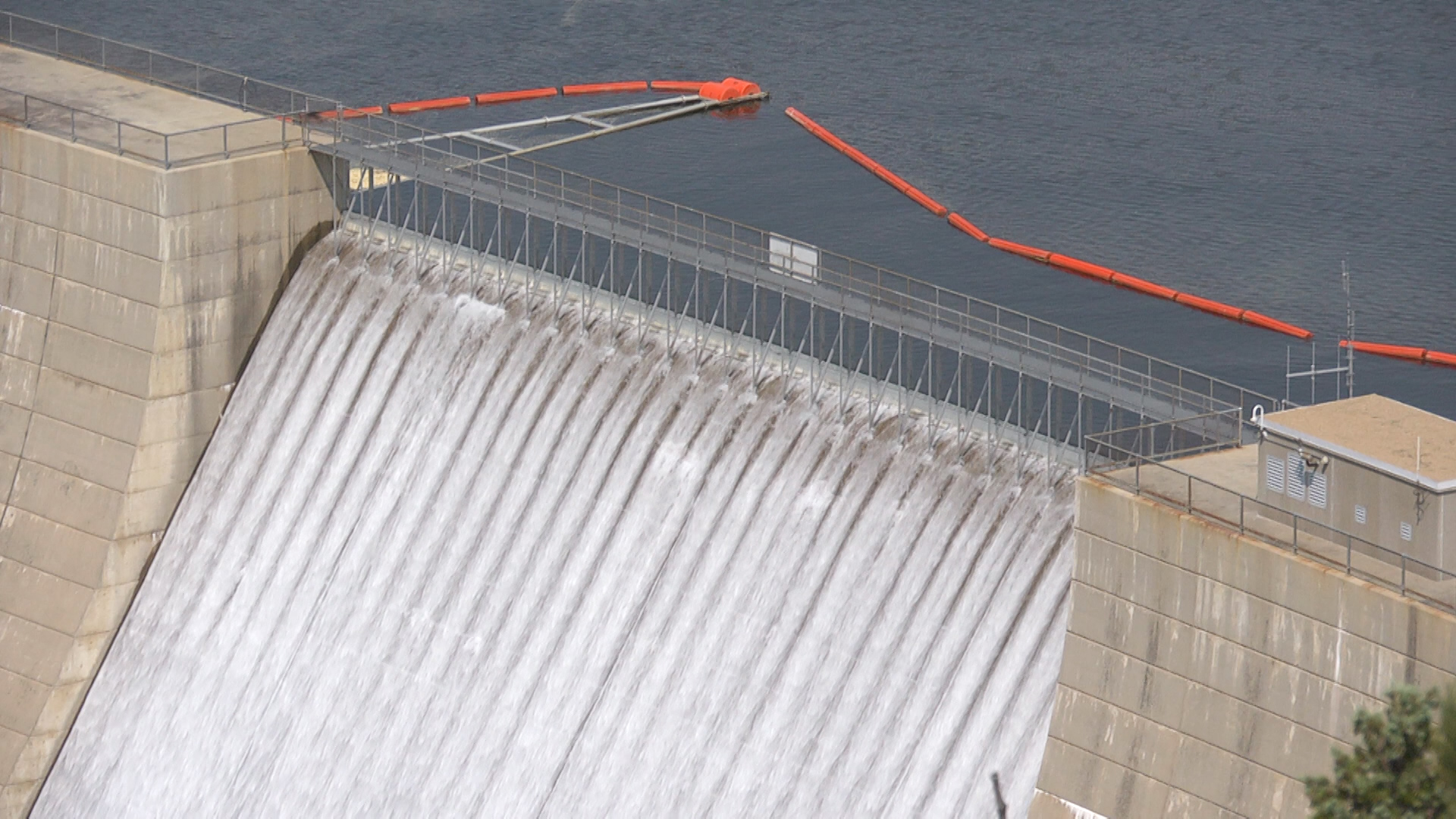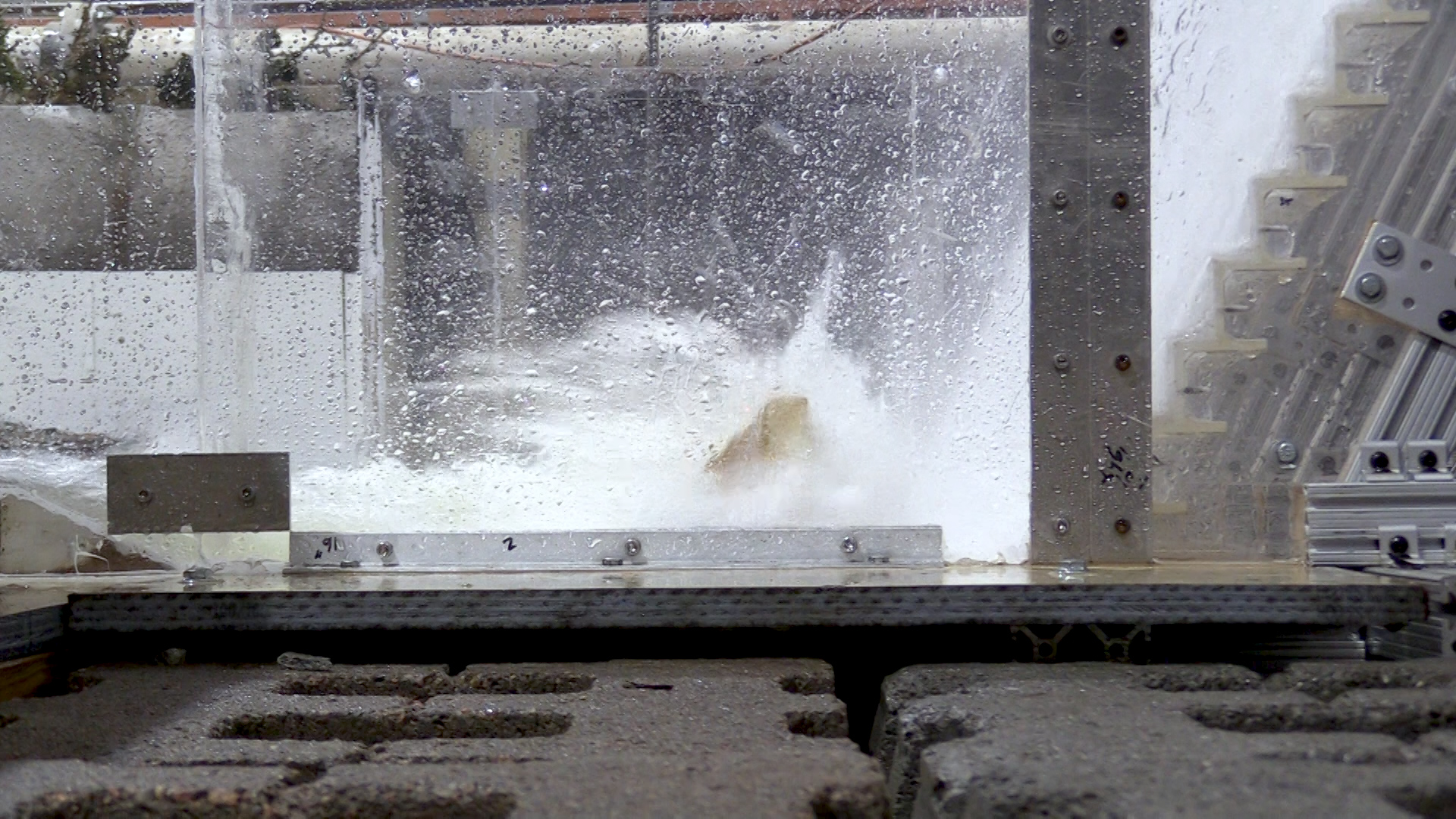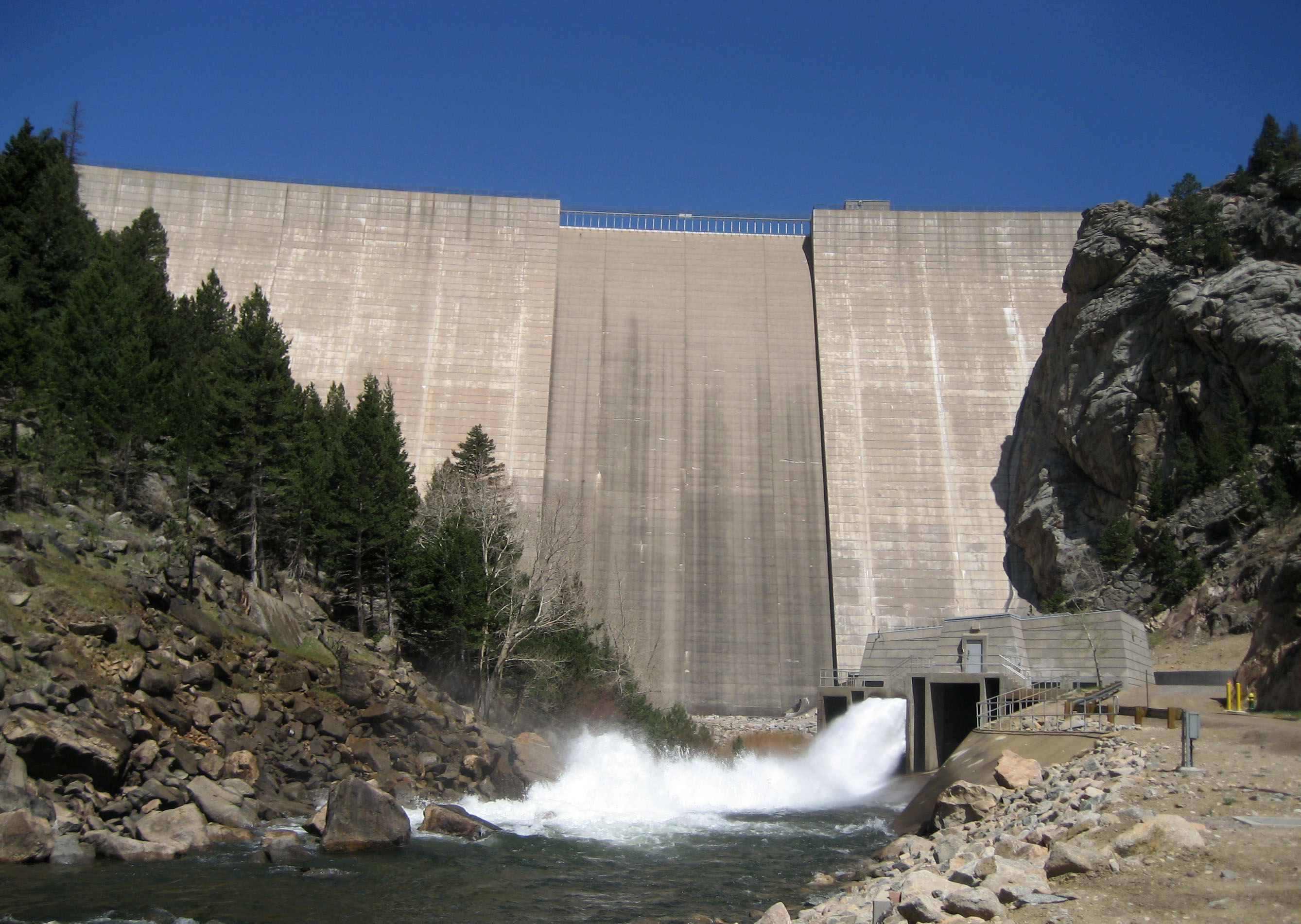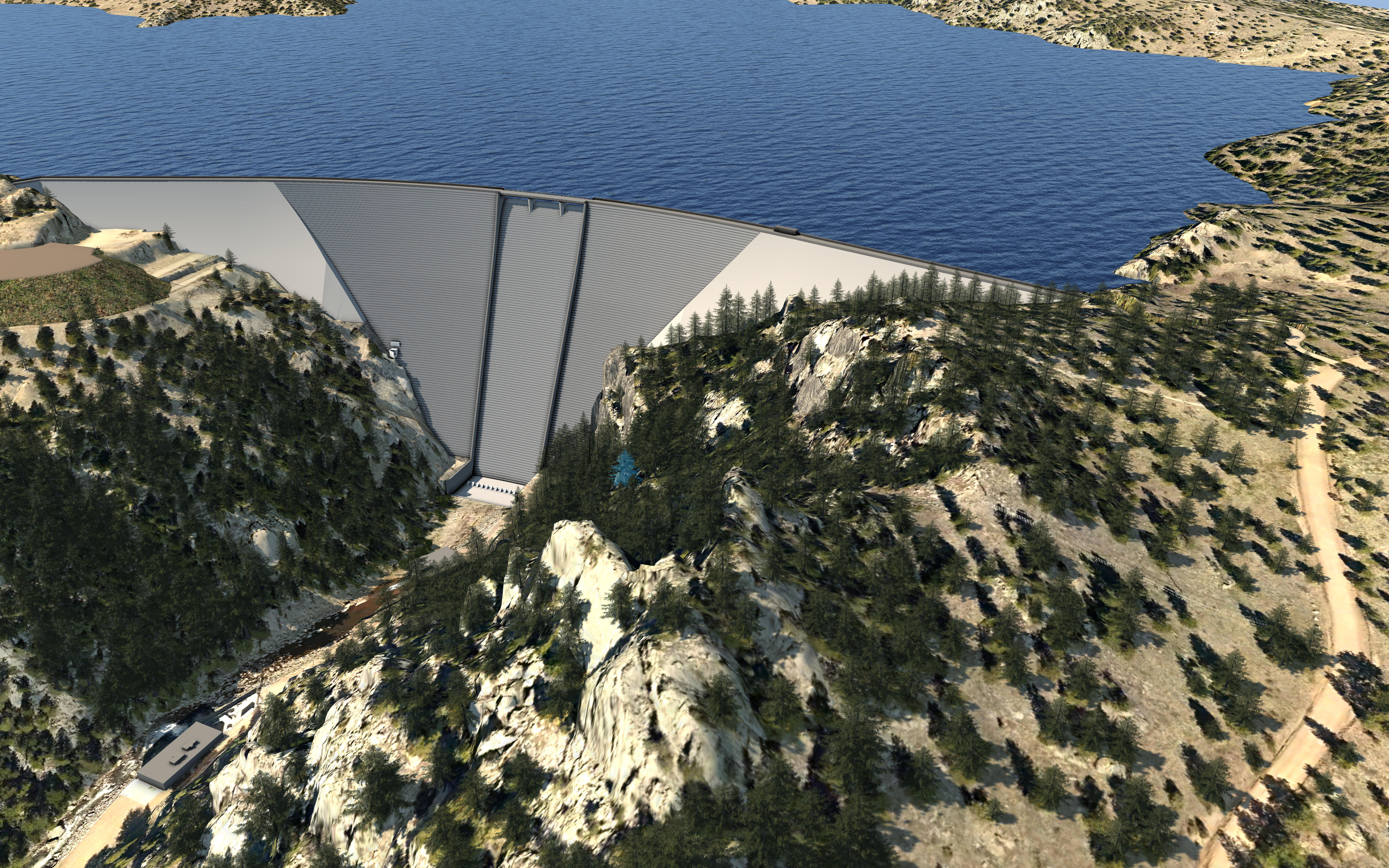
Indoor ‘waterfall’ puts water to the test at CSU
Researchers at Colorado State University’s hydraulics laboratory are used to getting their feet wet, literally and figuratively.
Their work requires them to stand in water, build new water models and understand water’s unique properties as it passes through man-made structures.
Over the past year, the CSU hydraulics team has been working with Denver Water to test plans for the spillway design that is part of the Gross Reservoir Expansion Project.
“We’re planning to raise the dam 131 feet,” said Casey Dick, dam safety engineer at Denver Water. “It’s a unique design and we needed the help of the experts at CSU to make sure our plans for the spillway work.”
CSU’s hydraulics laboratory is world-renowned. The research team builds scaled models of proposed projects and conducts experiments to understand water’s impact on dams, spillways, levees, whitewater parks and more.
They’ve done work for dams from as far away as Pakistan and tested designs for levees in the Netherlands.
“It’s a fun job and also extremely important to the communities where these structures are built,” said Chris Thornton, director of the Colorado State University Hydraulics Laboratory. “Our job is to provide designers with information to make sure their projects can withstand the unique properties of water.”
Thornton called the Denver Water project one of the most challenging and intricate designs he’s ever worked on at the lab.
In addition to being the tallest and steepest of its kind, the raised dam will feature large concrete steps from the base to the top that result from the construction technique that will be used to build the raised dam.
The stepped design also changes the dynamics of how water will flow down the spillway compared to the current face which has a smooth surface.
“We built a 22-foot tall model of the Gross Dam spillway out of nearly 500 custom made pieces of Plexiglass,” Thornton said. “It looks like a big waterfall when it’s in operation.”
The model has several sensors that measure water’s velocity, depth, pressure and the amount of air in the water.
“Computer models that we have available today are good at initial evaluations, however they’re not able to answer the specific questions of a design this complicated,” Thornton said.
Gross Dam’s past and future
Gross Dam was built in the 1950s to help store water for Denver’s growing population. The dam’s engineers picked the location with the foresight that it would need to be raised in the future.
The time has come and Denver Water is planning to raise the dam, which will nearly triple the amount of water the reservoir can hold.
“The enlarged reservoir will provide resilience in our water supply,” Dick said. “It will also provide more balance between our northern and southern water collection systems.”
What is a spillway?
Gross Dam’s spillway is an important safety and operational feature of the dam. It’s located in the middle of the structure and allows water to pass through when the reservoir is full.
In the event of a major rainstorm, the spillway provides a channel for water to flow so high water doesn’t go over the top of the dam.
To prepare for extreme weather scenarios, the CSU team ran simulations of high flows over the spillway to ensure the new structure will be safe.
“It’s important to understand the relationship between waterflow and the geometry of the structure and to replicate the processes that the structure creates,” said Rob Ettema, civil engineering professor at Colorado State University. “If we get those wrong, then the structure won’t function properly.”
What did testing reveal?
The CSU team’s first test was to make sure that the design team’s computer modeling worked on a real structure with actual moving water.
“We were able to verify that the design of the new spillway did indeed work and water flowed over the dam and down the spillway in a controlled manner,” Thornton said. “But we discovered that some changes needed to be made to the stilling basin.”
The stilling basin is a concrete structure at the base of the dam. Its purpose is to slow down water, so it flows safely back into the stream after cascading down the spillway.
“We modified the design of the baffle blocks in the stilling basin which forces water to spin around like a washing machine,” said Taylor Hogan, manager of the Colorado State University Hydraulics Laboratory. “The blocks act like brakes and slow the water pouring down the spillway at 60 miles per hour down to 6 miles per hour. This allows the water to flow safely downstream.”
The team found the correct placement for the blocks, which meant they were able to cut the length of the new stilling basin nearly in half. This change will result in significant financial savings on the overall project.
The team’s research also helped with determining the correct height of the spillway chute’s walls and the type of concrete that will be used to build the dam.
What’s next?
The CSU researchers will keep the model up and running through 2019 and continue to share their findings with Denver Water engineers along with other members of the Gross Reservoir Expansion Project design team from Stantec and AECOM.
“The CSU team did a great job and we’ve been very impressed with their work,” Dick said. “Their findings will help ensure that we “right-size” the spillway when we build it.”
Denver Water is currently in the final phase of the approval process for the dam raise and is waiting to get the go-ahead from the Federal Energy Regulatory Commission before beginning construction.
Thornton said the research on Gross Dam will be used around the world by other dam designers.
“This has been a rewarding project to work on,” he said. “We’re happy to work with Denver Water and excited to add to the overall body of knowledge surrounding civil engineering.”


